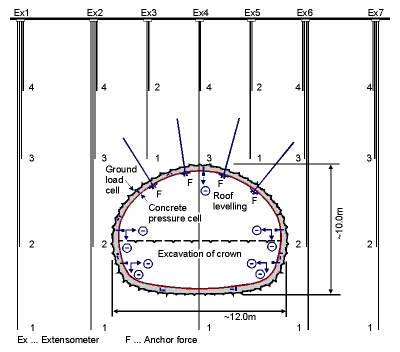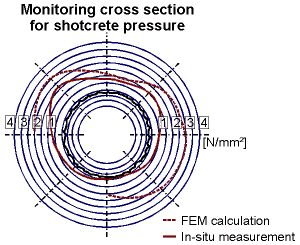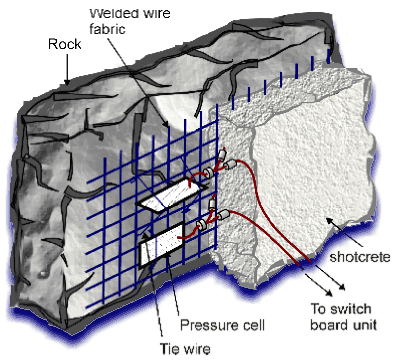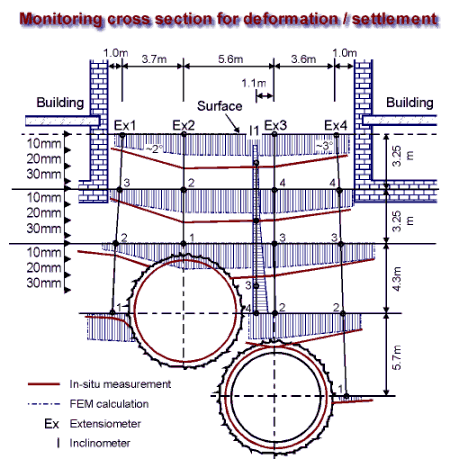You are here
In-Situ Measurements
The success of the so called NATM or Sequential Support Method is based on monitoring the ground behaviour and the ability of the sequential support to stabilise the opening. All assumptions made in the design stage have to be verified or modified during the execution of the project in accordance with the results of the in-situ observation of the ground behaviour and the support system. This is the key to economic viability of this construction system.
An in-situ measuring installation is equipped with various types of instruments. Depending on the ground conditions, they can include extensometers, inclinometers, levelling gauges, anchor load cells and convergence gauges. Pressure cells record the load on the lining and determine its actual factor of safety.

Stress redistribution around a 6.5m metro running tunnel in soft ground as measured by flat Glötzl Pressure Cells embedded within the shotcrete shell.


Subsidence and surface settlement were the principal concerns when excavating the metro running tunnels below the streets of Frankfurt. Extensive use of in-situ instrumentation provided evidence that NATM construction of such a configuration was possible in soft ground (Frankfurt Clay) and proved that the lower tube before the upper was correct.
